Inverness Campus, A Place To Inspire: CED Commercial Project
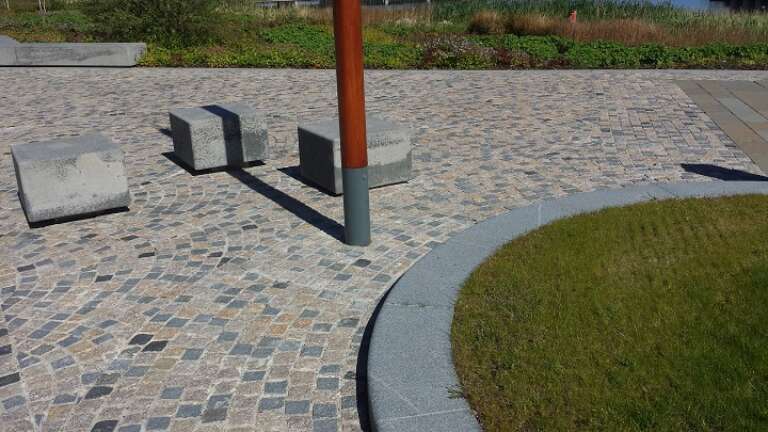
Post date: 23 Oct, 2017
Thanks to a newly built communal space, the Inverness Campus is now significantly contributing to the national economy in Scotland with the facility officially upgrading Inverness to city status. A modern space for learning, leisure and commerce, the two campus spaces’ opened in May 2015 and consist of a multitude of different granites and paving patterns mainly supplied by the CED Stone Group Commercial Department.
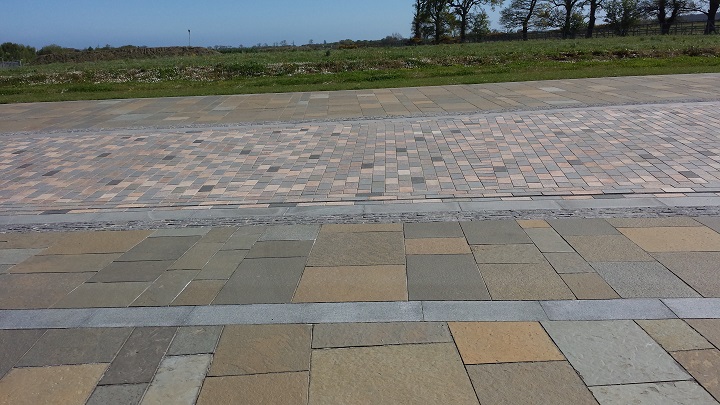
The Highlands and Islands region has a growing reputation for innovative and collaborative partnerships, and Inverness Campus wanted to offer an ‘outstanding, purpose-built environment to develop these qualities, especially in life sciences. The Inverness Campus now hosts world-class facilities, ideally suited to businesses and professionals from around the globe. In addition to helping students and researchers to flourish from an educational perspective, the campus also offers enterprising organisations the opportunity to co-locate, work together and share knowledge to grow their businesses. Incorporating greener elements into the scheme was highly important; from grassy areas to mixed native hedges and more controlled planting.
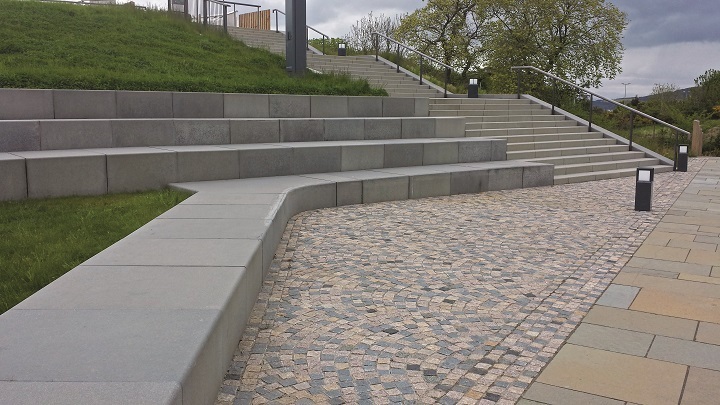
Edinburgh-based Architects HarrisonStevens wanted the campus to be a ‘vibrant and engaging landscape in which to reside, to work, to socialise, to recreate and to connect communities’. Needing to be suitable for traffic and a heavy flow of pedestrians, the Commercial team advised on how the different paving materials could help to distinguish multiple paths, roads and communal spaces whilst maintaining a contemporary and engaging look.
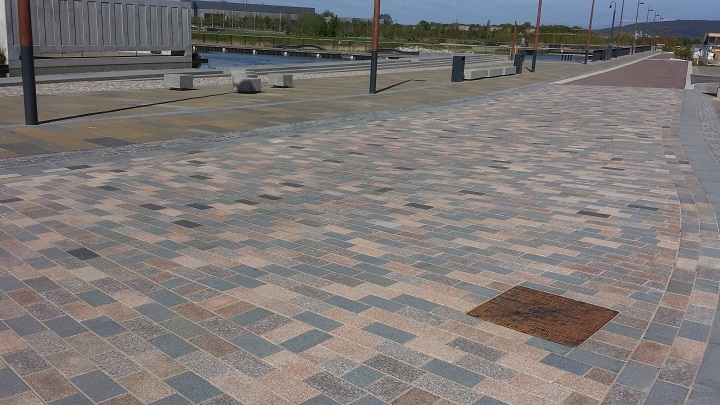
‘The central core of the campus is an exemplar delivery of slow-flow public realm, integrating multi-modal transport links and promoting interaction and discourse between these varied campus users.’ A sustainable water management design was also incredibly important to the wider scheme, accommodating the 200-year-old flood event. A large open space intended for outdoor events for both students and members of the public surrounds the central pond.
‘The rich Highland context is drawn into the site by the ordering principle of the masterplan and its focus northwards to Ben Wyvis and made tangible by the material and planting selection.’ Additional bespoke seating blocks in various sizes offer more solitary resting spaces across the campus for students, visitors and tutors. The design of the seating concepts was vital in creating a vibrant campus atmosphere - a range of sizes, orientations, textures and layouts were used in order to ‘catalyse social discourse’ as well as providing more quieter, private areas for concentration or study.
Wide-open spaces paved in a traditional fan pattern with split Chinese Granite setts in yellows, greens, mid-greys, pinks and blacks makes this a truly unique scheme. Great care was taken over the detailing, and the bespoke design draws on interpretations of the surrounding highland landscape so local materials were still used throughout where possible.
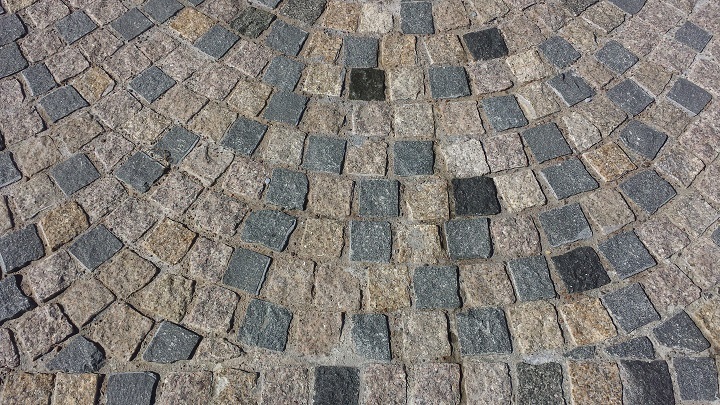
Bespoke sloping Silver Grey Granite kerbs crafted in accordance with the Architect’s unique designs help to control the speed of traffic, with the multifunctional use of a border for green planting. ‘The core of green infrastructure is not only the focus of social activity on site but also the genesis of many food chain and ecological pyramids and targeted habitat creations’.
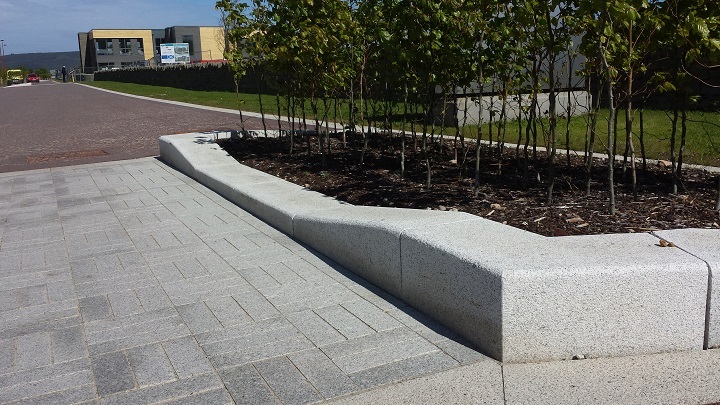
Silver Grey Granite special setts were also used for mixed purposes throughout the project, along with both straight and radius kerbs and channels in White, Blue-Grey and Silver Grey Granite. The campus had to accommodate for a variety of different user groups - so a range of different routes was needed, for walking, jogging and cycling pedestrians as well as traffic and lorries making deliveries all circumnavigating the Campus Green -‘where the highest quality of finishes and materials were concentrated’.
Fundamentally, the campus brings together previously fractured districts of Inverness together - sitting alongside the A9 trunk road - so connectivity with local, national and international communities was a key driver in the development of the design. Designed to be a ‘public park’, a pedestrian and cycle bridge connecting over the A9 to the west and railway planned for the future will also contribute to the overall concept. The main Plaza is an open space, with Silver Grey Granite corduroy paving indicates potential hazards for pedestrians at the top of the steps, creating easy user navigation and self-orientation.
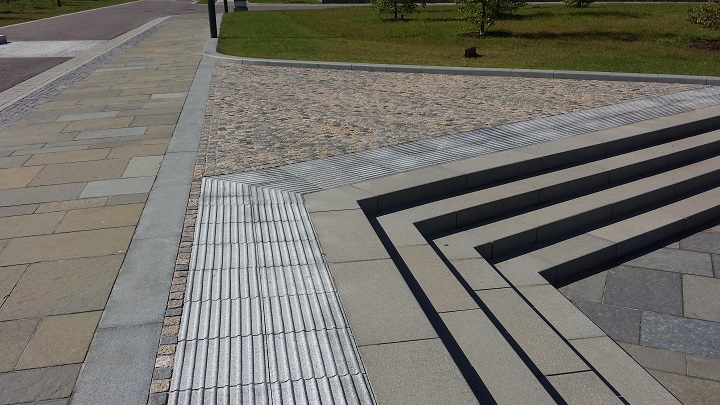
A circle of thicker roadway setts in yellows, greens, mid-greys, pinks and blacks surround a nearby roundabout as you come off the main road into the campus, helping to guide traffic and signify a new road zone whilst continuing the style throughout the scheme.
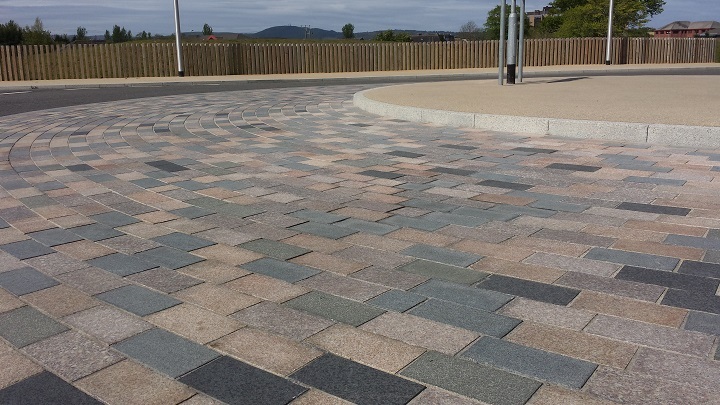
You can find the case study here.